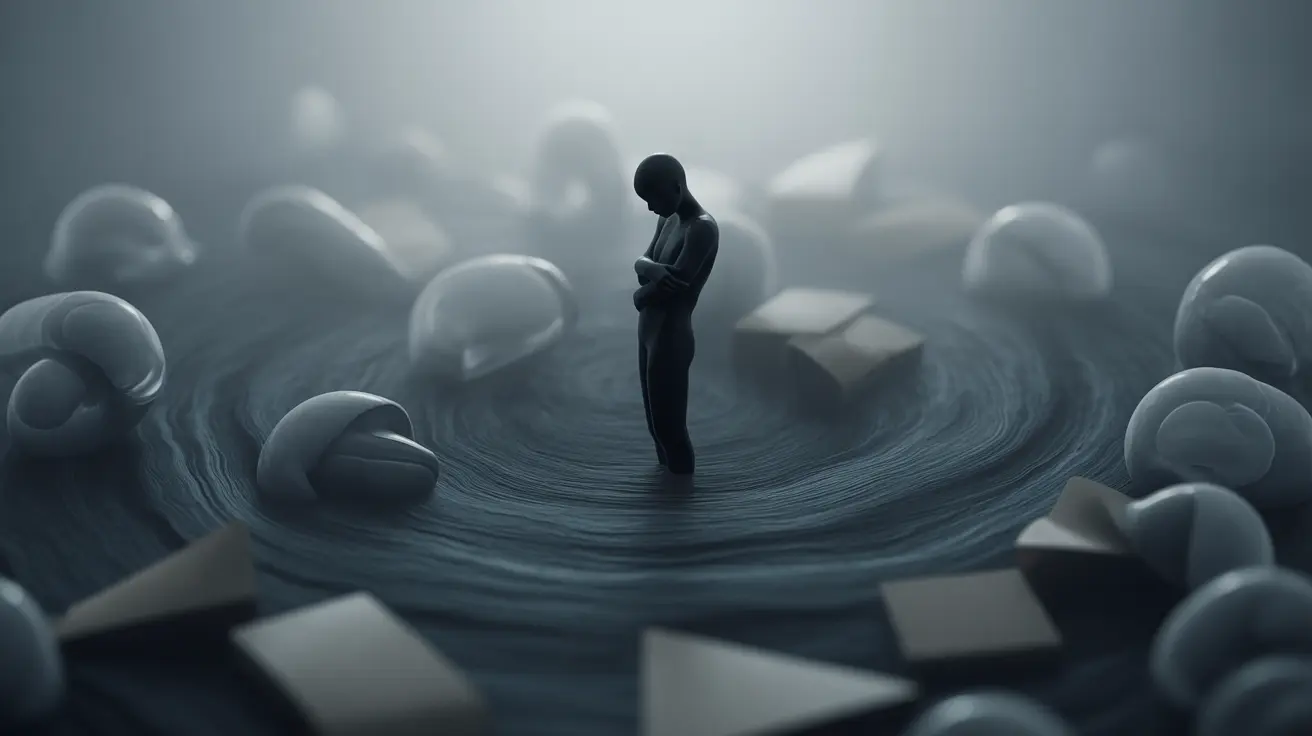Hoarding OCD is a complex manifestation of obsessive-compulsive disorder characterized by intense anxiety around discarding items and compulsive acquisition behaviors. While it shares some similarities with hoarding disorder, hoarding OCD has distinct features that set it apart, particularly the presence of intrusive thoughts and specific anxiety-driven compulsions.
This comprehensive guide explores the unique aspects of hoarding OCD, helping you understand its symptoms, underlying causes, and available treatment options. Whether you're seeking information for yourself or supporting a loved one, understanding this condition is the first step toward effective management.
Distinguishing Features of Hoarding OCD
Hoarding OCD differs from general hoarding disorder in several key ways. People with hoarding OCD typically experience intense anxiety and specific obsessive thoughts that drive their hoarding behaviors. These thoughts often center around:
- Fear of making mistakes by throwing something important away
- Worry about needing items in the future
- Concern about losing memories attached to objects
- Anxiety about environmental waste or responsibility
Unlike general hoarding disorder, individuals with hoarding OCD are often aware that their thoughts and behaviors are excessive or irrational, but feel unable to control them due to overwhelming anxiety.
Understanding the Causes
Hoarding OCD develops from a complex interaction of biological and environmental factors. Research suggests that genetic predisposition plays a significant role, as OCD tends to run in families. Environmental stressors, traumatic experiences, and learned behaviors can also contribute to its development.
The OCD Connection
As a subtype of OCD, hoarding compulsions are driven by obsessive thoughts and anxiety rather than simple collecting behaviors. The brain's processing of uncertainty and risk appears to be altered, leading to excessive worry about potential consequences of discarding items.
Treatment Approaches for Hoarding OCD
Treatment for hoarding OCD typically involves a multi-faceted approach, combining therapeutic interventions with possible medication support. The most effective treatments include:
Cognitive Behavioral Therapy (CBT)
CBT specifically adapted for hoarding OCD helps individuals challenge their thought patterns and gradually face their fears about discarding items. Exposure and Response Prevention (ERP) therapy, a specialized form of CBT, is particularly effective in treating hoarding OCD symptoms.
Medication Options
Selective Serotonin Reuptake Inhibitors (SSRIs) often play a valuable role in managing hoarding OCD symptoms. These medications can help reduce anxiety and obsessive thoughts, making it easier for individuals to engage in therapy and challenge their hoarding behaviors.
Strategies for Managing Hoarding OCD
Successful management of hoarding OCD often requires a combination of professional help and personal strategies. Key approaches include:
- Developing sorting and organizing systems
- Setting realistic goals for decluttering
- Building a support network
- Practicing mindfulness and anxiety management techniques
- Regular engagement with therapeutic exercises
Frequently Asked Questions
What are the main symptoms that distinguish hoarding OCD from hoarding disorder?
Hoarding OCD is characterized by intense anxiety, specific obsessive thoughts, and awareness that the behaviors are excessive. Unlike hoarding disorder, individuals with hoarding OCD experience clear obsessive-compulsive patterns and often feel distressed about their inability to discard items.
How is hoarding OCD typically treated and can therapy help with compulsive hoarding behaviors?
Hoarding OCD is typically treated with Cognitive Behavioral Therapy (CBT), particularly Exposure and Response Prevention (ERP). These therapeutic approaches have shown significant effectiveness in helping individuals manage their compulsive hoarding behaviors and reduce associated anxiety.
What causes hoarding OCD and how is it related to obsessive-compulsive disorder?
Hoarding OCD is a manifestation of OCD driven by obsessive thoughts and anxiety about discarding items. It develops from a combination of genetic predisposition, environmental factors, and altered brain processing of risk and uncertainty.
Why do people with hoarding OCD struggle to discard items even if they have no value?
People with hoarding OCD struggle to discard items due to intense anxiety and specific obsessive thoughts about potential consequences. These thoughts can include fears of losing important information, memories, or opportunities, regardless of the item's actual value.
Can medication like SSRIs help manage hoarding OCD symptoms alongside therapy?
Yes, SSRIs can be effective in managing hoarding OCD symptoms when used alongside therapy. These medications help reduce anxiety and obsessive thoughts, making it easier for individuals to engage in therapeutic work and challenge their hoarding behaviors.




